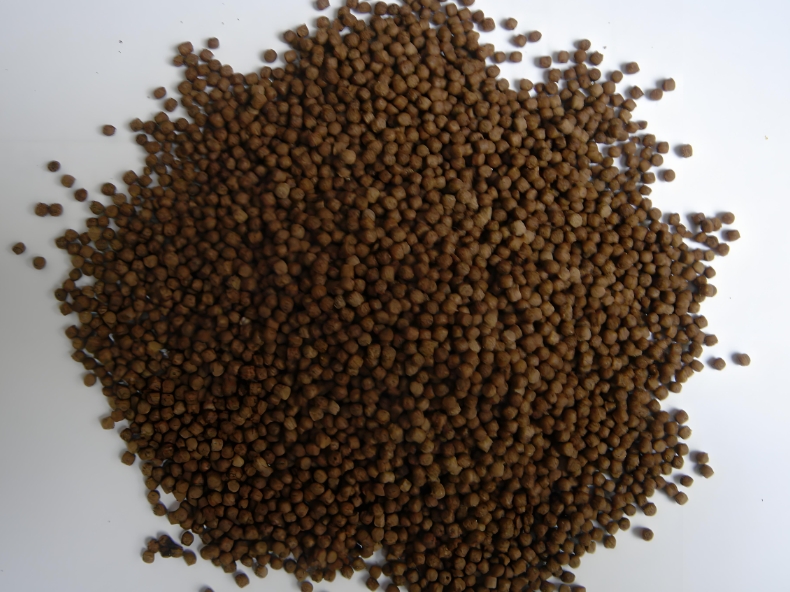Wie man eine Fischfutterproduktionsanlage auswählt: Ein umfassender Leitfaden
Choosing the right fish feed production line is a critical decision for aquaculture operators, feed manufacturers, and investors. The right equipment ensures efficiency, product quality, and long-term profitability. Here’s a structured approach to selecting a production line that meets your specific needs.
1. Define Your Production Goals
Begin by clarifying your objectives:
- Target Output: Determine the required production capacity (e.g., 100 kg/h, 1 ton/h, 5 tons/h). This will dictate the scale and cost of the equipment.
- Feed Type: Identify the products you plan to manufacture:
- Floating, sinking, or slow-sinking feeds?
- Pellet size (e.g., 0.5 mm for fry, 5 mm for adult fish)?
- Species-specific feed (e.g., for shrimp, salmon, tilapia)?
- Raw Materials: Consider the ingredients you will use (e.g., high-fat content, plant-based proteins, alternative ingredients like insect meal).
2. Understand the Key Processes
A typical production line includes these core stages:
- Schleifen: Reducing raw materials to a fine powder.
- Mischen: Blending ingredients uniformly.
- Strangpressen: Cooking and shaping the feed.
- Trocknen: Reducing moisture content.
- Kühlung: Stabilizing pellets post-drying.
- Beschichtung: Adding oils, vitamins, or pigments.
- Verpackung: Weighing and bagging the final product.
3. Evaluate Equipment Based on Your Needs
A. Grinding System
- Hammer Mill: Suitable for most materials; ensure it can achieve a fine particle size (<120 microns) for improved digestibility.
- Micro-Pulverizer: Needed for ultra-fine grinding if producing feed for larval fish or shrimp.
B. Mixing System
- Ribbon Mixer: Cost-effective for small-scale production.
- Double-Shaft Paddle Mixer: Provides superior homogeneity for large batches and liquid additives.
C. Extrusion System
- Single-Screw Extruder: Lower cost, suitable for sinking feed and simple formulations.
- Zweischneckenextruder: Offers greater flexibility, control over product density (floating/sinking), and ability to handle high-fat or challenging recipes. Essential for high-quality, specialized feeds.
- Key Features to Look For:
- Adjustable screw speed and barrel temperature.
- Modular barrel design for process flexibility.
- Wear-resistant materials (e.g., tungsten carbide-lined barrels).
D. Drying and Cooling System
- Multi-Pass Dryers: Efficiently reduce moisture without overheating nutrients.
- Counter-Flow Coolers: Gently bring pellets to room temperature.
- Importance: Ensure the system matches your extruder’s capacity to avoid bottlenecks.
E. Coating System
- Vacuum Coater: Ideal for maximizing oil and nutrient absorption.
- Rotary Drum Coater: Simpler and more affordable for basic coating.
F. Packaging System
- Automated Weighing and Bagging: Improves efficiency and reduces labor for large-scale production.
- Nitrogen Flushing: Recommended for preserving freshness in premium feeds.
4. Assess Supplier Reliability
- Experience and Reputation: Choose manufacturers with a proven track record in fish feed equipment.
- Technische Unterstützung: Ensure they offer installation, training, and troubleshooting services.
- Verfügbarkeit von Ersatzteilen: Verify that wear parts (dies, screws, hammer mill screens) are readily available.
- References: Request case studies or contact existing clients to evaluate performance.
5. Consider Operational Factors
- Space Requirements: Ensure your facility can accommodate the production line layout.
- Power Supply: Check voltage and power needs (e.g., extruders require high energy input).
- Labor Skills: Determine if you need trained operators or if the supplier provides training.
- Regulatory Compliance: Ensure the equipment meets food safety and industry standards (e.g., ISO, CE).fish feed extruder machine prices
6. Calculate Costs and ROI
- Capital Investment: Compare quotes from multiple suppliers, but prioritize quality over lowest price.
- Operating Costs: Estimate energy consumption, maintenance, and labor expenses.
- Rentabilität der Investition (ROI): Project payback time based on production volume, product value, and market demand.
7. Plan for Future Expansion
- Modular Design: Select equipment that can be upgraded or scaled (e.g., adding a larger extruder or dryer).
- Flexibility: Choose a line capable of producing multiple feed types to adapt to market changes.fish feed extruder machine prices
Checklist for Selection
- [ ] Production capacity matches your goals.
- [ ] Equipment handles your specific recipes (e.g., high-fat, fine pellets).
- [ ] Supplier offers reliable after-sales service and spare parts.
- [ ] Line includes essential auxiliaries (e.g., grinders, mixers, coaters).
- [ ] Compliance with safety and quality standards.
- [ ] Budget covers installation, training, and initial maintenance.
Schlussfolgerung
Selecting a fish feed production line requires careful analysis of your production needs, thorough evaluation of equipment capabilities, and partnership with a reputable supplier. Investing in the right technology not only ensures high-quality feed but also enhances operational efficiency and long-term competitiveness in the aquaculture industry. By following this guide, you can make an informed decision that supports your business growth.fish feed extruder machine prices








